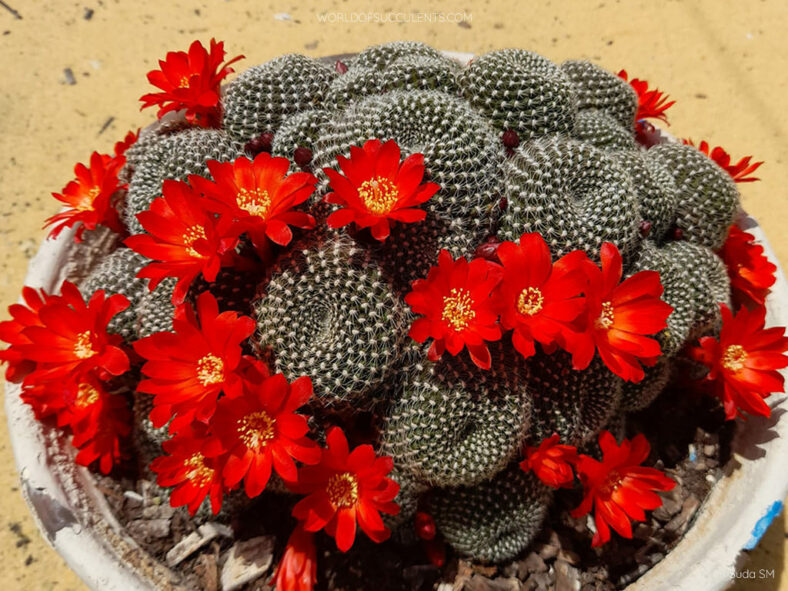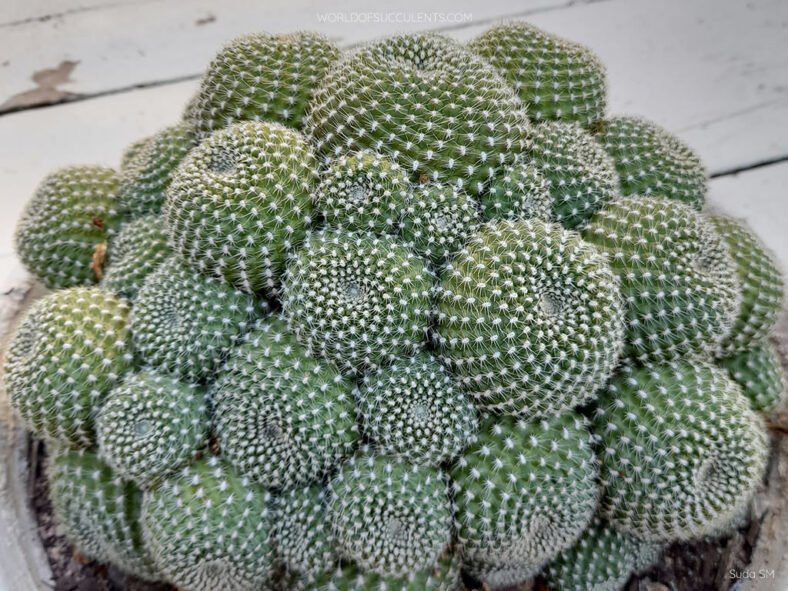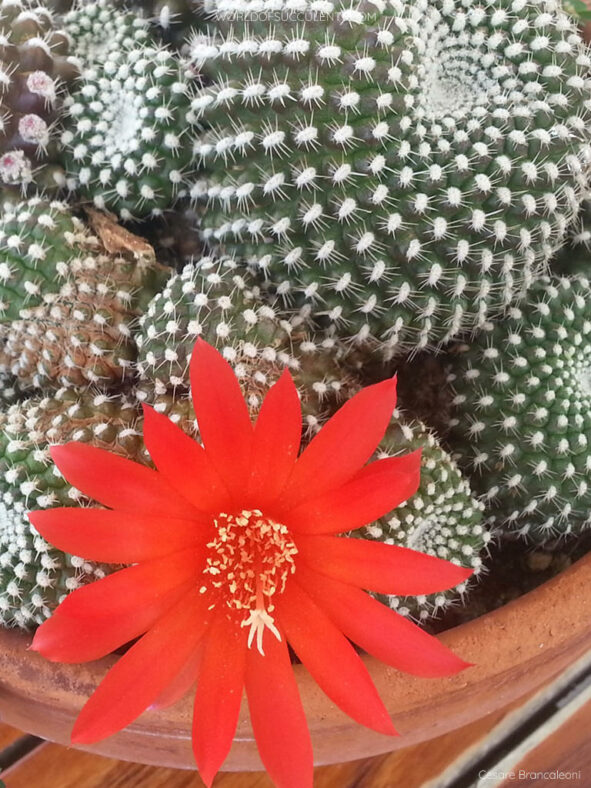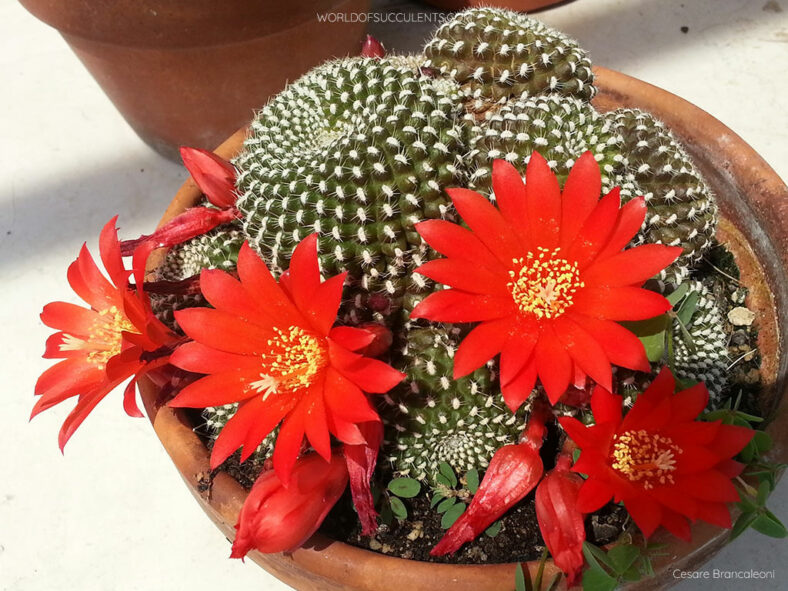Rebutia krainziana is not recognized as a separate species and is treated as a synonym of Rebutia marsoneri.
Scientific Name
Rebutia krainziana Kesselr.
Accepted Scientific Name
Rebutia marsoneri Werderm.
Synonym(s)
Rebutia calliantha var. krainziana, Rebutia wessneriana var. krainziana
Scientific Classification
Family: Cactaceae
Subfamily: Cactoideae
Tribe: Trichocereeae
Genus: Rebutia
Etymology
The specific epithet "krainziana" (pronounced "kra-inz-ee-AY-na") honors Hans Krainz (1906-1980), a Swiss horticulturist and cactus expert.
Origin
Rebutia krainziana is known only from cultivation.
Description
Rebutia krainziana is a small cactus that forms a dense clump of dark green, depressed spherical stems with conical, spirally arranged tubercles. Each tubercle has a white-felted areole and a cluster of thin, white, appressed spines at the tip. The stems can grow up to 2 inches (5 cm) in diameter.
In spring, Rebutia krainziana produces beautiful orange-red flowers that remain open for three or four days. The funnel-shaped flowers can reach a length of 2 inches (5 cm) and a diameter of 1.4 inches (3.5 cm). They appear from old areoles, often forming a circle around the base of the stem.

How to Grow and Care for Rebutia krainziana
Light: While it grows well in direct sunlight, Rebutia krainziana prefers partial shade during the midday summer sun. A sunny window would be ideal if you are growing the cactus indoors.
Soil: Having soil with good drainage is most important for a healthy plant. You can use a commercial soil mix for cacti or make your own.
Temperature: As a mountain plant, this cactus does not appreciate high temperatures and grows best in USDA Plant Hardiness Zones 9b to 11b, with average minimum winter temperatures ranging from 25°F to 50°F (-3.9°C to 10°C).
Watering: During the growing season, water Rebutia krainziana frequently, but allow the soil to completely dry out before watering again. However, when it goes dormant in the winter, stop watering.
Fertilizing: Although unnecessary, using a low-balanced soluble fertilizer diluted to half the recommended strength can help your cactus thrive. However, suspend the feeding in winter.
Repotting: It is recommended that young plants be repotted each year in early spring. On the other hand, a mature plant only needs to be repotted when it outgrows its pot. Late winter or early spring is the best time for repotting.
Propagation: You can propagate Rebutia krainziana by offsets or seeds. Remove the offsets when the plant is actively growing and sow the seeds in the spring.
See more at How to Grow and Care for Rebutia.
Toxicity of Rebutia krainziana
Rebutia krainziana has no reported toxic effects.
Links
- Back to genus Rebutia
- Succupedia: Browse succulents by Scientific Name, Common Name, Genus, Family, USDA Hardiness Zone, Origin, or cacti by Genus
Photo Gallery
Click on a photo to see a larger version.


